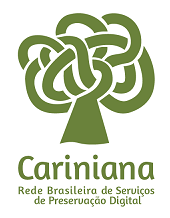Using QR code hypermidia as a resource interdisciplinary work in the book “Oficina de História”
DOI:
https://doi.org/10.5433/2237-9126.2019v13n25p25Keywords:
Didactic Book, Technologies, QR Code, Learning.Abstract
This article seeks to investigate the possibilities found in the QR Code resources presented in the book “Oficina de História 1” and how they can be used in the classroom in an interdisciplinary way. The researched book is part of the didactic material of the high school students of EEMTI Governador César Carls de Oliveira Filho of the municipality of Quixadá (CE). For the analysis, we use concepts of Memory, Document and Monument of Jaques Le Goff (1990), situating the uses of the Didactic Book and the teaching of History in Brazil, according to Décio Gatti Júnior (2004), and the sociocultural aspects of mobile communication technologies in Brazil (PELLANDA, 2009). From these concepts, it was possible to critically approach the use of interdisciplinary pedagogical resources suggested by the textbook “Oficina de História 1” (LORIERI, 2010). We conclude that the QR Code tools presented by the book benefit the student's global learning.Downloads
References
CHOPPIN, Alain. História dos livros e das edições didáticas: sobre o estado da arte. Educação e Pesquisa. São Paulo v.30, n.3, p. 549-566, set./dez. 2004.
GATTI JUNIOR, Décio. A escrita escolar da história: livro didático e ensino no Brasil (1970-1990). Bauru- SP : Edusc ; Uberlândia MG : Edufu, 2004.
GOFF, Jacques Le. História e Memória. Campinas, SP Editora da UNICAMP,1990. Disponível em:
https://www.ufrb.edu.br/ppgcom/images/Hist%C3%B3ria-e-Mem%C3%B3ria.pdf. Acesso em: 08 ago de 2019.
LEMOS, André. Cibercultura: tecnologias e vida social na cultura
contemporânea. Editora Sulina. 4. ed., Porto Alegre, 2008.
LIMA, Mariana. Brasil já tem mais de um smartphone ativo por habitante, diz estudo da FGV. Estadão. Disponível em
https://link.estadao.com.br/noticias/geral,brasil-ja-tem-mais-de-umsmartphone-ativo-por-habitante-diz-estudo-da-fgv,70002275238. Acesso em: 24 jul. 2019.
LORIERI, Marcos Antônio. Complexidade, Interdisciplinaridade,
Transdisciplinaridade e Formação de Professores. Notandum. 2010.
MARCONDES, Marli. História e informática: O uso da hipermídia no resgate da História da "Estrada de Ferro Funilense". Disponível em
http://repositorio.unicamp.br/jspui/bitstream/REPOSIP/284154/1/Marcondes_MarliAparecida_M.pdf. Acesso em 7 ago. 2019
PATAH, Rodrigo. O boom dos smartphones e seu impacto no
comportamento do consumidor. Mindminers. Disponível em
https://mindminers.com/blog/pesquisa-mobile/. Acesso em: 07 ago. 2019.
PELLANDA, Eduardo Campos. Comunicação Móvel no Contexto Brasileiro. Comunicação e Mobilidade: aspectos socioculturais de comunicação no Brasil. André Lemos, Fábio Josgrilberd organizadores. Salvador: EDUFBA, 2009. Disponível em
http://poscom.ufba.br/arquivos/livro_Comunicacao_Mobilidade_AndreLemos.pdf. Acesso em 7 ago. 2019.
RIBAS, Ana Carolina; OLIVEIRA, Bianca Soares; GUBAUA, Camila Aparecida; REIS, Gisele da Rocha; CONTRERAS, Humberto Silvano Herrera. O uso do aplicativo QR Code como recurso pedagógico no Processo de Ensino e Aprendizagem. Revista Pedagogia, 2017. Disponível em: http://www.opet.com.br/faculdade/revista-pedagogia/pdf/n14/n14-artigo-2-O-USO-DO-APLICATIVO-QR-CODE.pdf. Acesso em: 7 ago de 2019.
Downloads
Published
How to Cite
Issue
Section
License
Copyright (c) 2019 Domínios da ImagemDomínios da Imagem adopts the Creative Commons Attribution 4.0 International License, therefore, the copyrights related to the published articles belong to the author(s), who grant the journal the exclusive right of first publication.
Under this license it is possible to: Share - copy and redistribute the material in any medium or format. Adapt - remix, transform, and build upon the material, giving due credit and providing a link to the license and indicating if changes were made.











 The works in this journal are licensed under Creative Commons .
The works in this journal are licensed under Creative Commons .